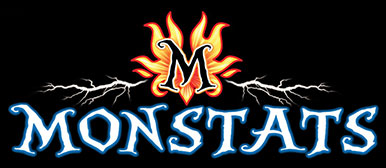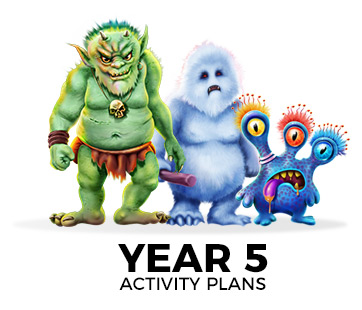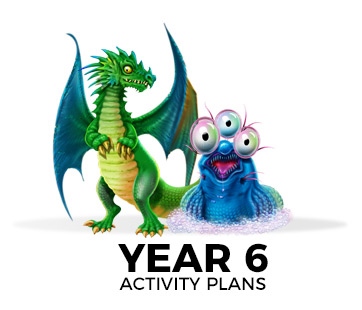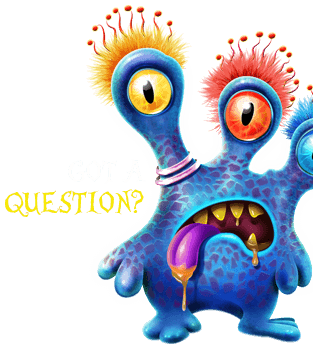

Upper Key Stage 2
Purchase of one or more packs of cards enables member access to Activity Plans and resources for Years 1 to 6.
Below is a list of indicative statements from the Upper KS 2 Mathematics Programme of Study, covered by the Activity Plans and additional resources.
Year 5 Activity Plans
Number - Fractions
- compare and order fractions whose denominators are all multiples of the same number
- identify, name and write equivalent fractions of a given fraction, represented visually, including tenths and hundredths
- recognise mixed numbers and improper fractions and convert from one form to the other and write mathematical statements > 1 as a mixed number [for example, 2/5 + 4/5 = 6/5 = 1 1/5]
- add and subtract fractions with the same denominator and denominators that are multiples of the same number
Statistics
- solve comparison, sum and difference problems using information presented in a line graph
- complete, read and interpret information in tables, including timetables.
Other objectives covered within the Year 5 activities - Number
- identify multiples and factors, including finding all factor pairs of a number, and common factors of two numbers
- solve problems involving multiplication and division including using their knowledge of factors and multiples

Year 6 Activity Plans
Number – Fractions
- use common factors to simplify fractions; use common multiples to express fractions in the same denomination
- compare and order fractions, including fractions > 1
- add and subtract fractions with different denominators and mixed numbers, using the concept of equivalent fractions
- multiply simple pairs of proper fractions, writing the answer in its simplest form [for example, 1/4 × 1/2 = 1/8 ]
- divide proper fractions by whole numbers [for example, 1/3 ÷ 2 = 1/6 ]
- associate a fraction with division and calculate decimal fraction equivalents [for example, 0.375] for a simple fraction [for example, 3/8 ]
- recall and use equivalences between simple fractions, decimals and percentages, including in different contexts.
Algebra
- use simple formulae
- express missing number problems algebraically
Statistics
- interpret and construct pie charts and line graphs and use these to solve problems
- calculate and interpret the mean as an average
Other objectives covered within the Year 6 activities - Number
- identify common factors, common multiples and prime numbers, found in Fractions lesson plan.
Ratio and Proportion
- solve problems involving the calculation of percentages [for example, of measures, and such as 15% of 360] and the use of percentages for comparison
Upper KS2: Opportunities for cross curricular learning:
Science
- recording data and results of increasing complexity using scientific diagrams and labels, classification keys, tables, scatter graphs, bar and line graphs
- using test results to make predictions to set up further comparative and fair tests
- reporting and presenting findings from enquiries
- describe how living things are classified into broad groups according to common observable characteristics and based on similarities and differences, including microorganisms, plants and animals
- give reasons for classifying plants and animals based on specific characteristics
English
The use of Monstats Fact Files and Monstats cards can spark children's imagination and support the development of composition and writing within the following UK National Curriculum statements: plan their writing by:
- identifying the audience for and purpose of the writing, selecting the appropriate form and using other similar writing as models for their own
- noting and developing initial ideas, drawing on reading and research where necessary
- in writing narratives, considering how authors have developed characters and settings in what pupils have read, listened to or seen performed
Draft and write by:
- selecting appropriate grammar and vocabulary, understanding how such choices can change and enhance meaning
- in narratives, describing settings, characters and atmosphere and integrating dialogue to convey character and advance the action
- précising longer passages
- using a wide range of devices to build cohesion within and across paragraphs
- using further organisational and presentational devices to structure text and to guide the reader [for example, headings, bullet points, underlining]
Evaluate and edit by:
- assessing the effectiveness of their own and others' writing
- proposing changes to vocabulary, grammar and punctuation to enhance effects and clarify meaning
- ensuring the consistent and correct use of tense throughout a piece of writing
- ensuring correct subject and verb agreement when using singular and plural, distinguishing between the language of speech and writing and choosing the appropriate register
- proof-read for spelling and punctuation errors

Have a Question?
Ask us about KS2 activities